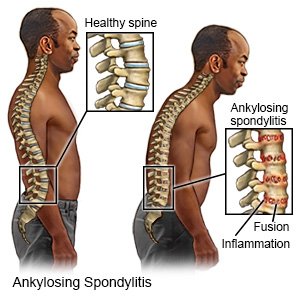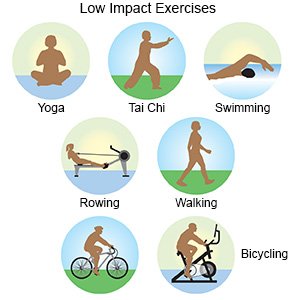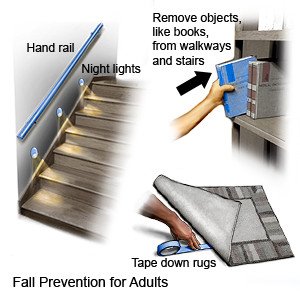Ankylosing Spondylitis
Medically reviewed by Drugs.com. Last updated on Aug 4, 2025.
Ankylosing spondylitis is a type of arthritis that affects your spine. Inflammation in the vertebrae causes them to become fused (joined). This makes your spine less flexible than it should be. Symptoms begin in your tailbone area and move up your back over time. Other joints that may be affected include the shoulder, neck, and hip.
 |
DISCHARGE INSTRUCTIONS:
Call your local emergency number (911 in the US) if:
- You cannot move your legs.
- You fall and think you have broken a bone.
Call your doctor if:
- You have eye pain or redness, become sensitive to light, or have blurred vision.
- You have new or worsening symptoms.
- You have questions or concerns about your condition or care.
Related medications
Treatment options
The following list of medications are related to or used in the treatment of this condition.
Medicines:
You may need any of the following:
- NSAIDs , such as ibuprofen, help decrease swelling, pain, and fever. This medicine is available with or without a doctor's order. NSAIDs can cause stomach bleeding or kidney problems in certain people. If you take blood thinner medicine, always ask your healthcare provider if NSAIDs are safe for you. Always read the medicine label and follow directions.
- Steroids injected into a joint may help decrease pain and stiffness.
- Biologic therapy helps decrease swelling, pain, and stiffness. These medicines increase the risk of infection. Your healthcare provider will need to monitor you closely while you are taking these medicines.
- Take your medicine as directed. Contact your healthcare provider if you think your medicine is not helping or if you have side effects. Tell your provider if you are allergic to any medicine. Keep a list of the medicines, vitamins, and herbs you take. Include the amounts, and when and why you take them. Bring the list or the pill bottles to follow-up visits. Carry your medicine list with you in case of an emergency.
Manage ankylosing spondylitis:
- Go to physical therapy as directed. A physical therapist can teach you exercises to keep your back and other joints flexible. Therapy can also help reduce pain and make it easier for you to do your daily activities. You may also learn deep breathing exercises to help your chest expand fully when you breathe.
- Maintain good posture. Sit and stand up straight. Only sit in straight-backed chairs, with your back pressed against the back of the chair. Do not lean forward when you are working at a computer or at a desk. An occupational therapist can show you ways to work at a desk without harming your spine.
- Sleep flat on your back on a firm mattress. Do not use a pillow under your head or knees.
- Move often during the day. Try not to stay in one position for long periods of time. For example, do not stand for long periods. Do not go for long car rides. Your healthcare provider may recommend swimming, tai chi, or walking for low impact exercise. Exercise helps keep your spine flexible.

- Do deep breathing exercises as directed, usually 2 to 3 times per day. Ankylosing spondylitis can make it difficult for you to breathe if your posture becomes bent over.
- Avoid activities that strain your back. Do not lift heavy objects. Ask your provider if it is safe for you to play sports. Some sports may be too rough for you to play safely.
- Do not smoke. Nicotine and other chemicals in cigarettes and cigars can cause lung damage. Ask your provider for information if you currently smoke and need help to quit. E-cigarettes or smokeless tobacco still contain nicotine. Talk to your provider before you use these products.
Self-care:
- Apply heat on your back for 20 to 30 minutes every 2 hours for as many days as directed. Heat helps decrease pain and muscle spasms.
- Apply ice on your back for 15 to 20 minutes every hour or as directed. Use an ice pack, or put crushed ice in a plastic bag. Cover it with a towel. Ice helps prevent tissue damage and decreases swelling and pain.
- Reach or maintain a healthy weight. Extra weight puts pressure on your spine and other joints. This can increase your symptoms and make ankylosing spondylitis worse. Ask your healthcare provider what a healthy weight is for you. Your provider can help you create a healthy weight loss plan, if needed.
- Prevent a fall. Make sure paths in your home are clear. Tape down ends of throw rugs and electric cords. Keep paths well lit so you can see where you are going.

Follow up with your doctor as directed:
You may need to return every 6 to 12 months so your progress can be monitored. You may be referred to specialists, such as eye or gastrointestinal doctors. Write down your questions so you remember to ask them during your visits.
© Copyright Merative 2025 Information is for End User's use only and may not be sold, redistributed or otherwise used for commercial purposes.
The above information is an educational aid only. It is not intended as medical advice for individual conditions or treatments. Talk to your doctor, nurse or pharmacist before following any medical regimen to see if it is safe and effective for you.
Learn more about Ankylosing Spondylitis
Treatment options
Care guides
Symptoms and treatments
Further information
Always consult your healthcare provider to ensure the information displayed on this page applies to your personal circumstances.
